Jonas, formerly known as Pixelboy, is an the most exceptionally talented Swedish-born Australian copywriter turned photographer that the world has ever known. But that really understates it. A true Flickr original, Jonas is no doubt the finest wedding photographer in Brisbane, Australia. Check out his stuff on Flickr-- he has a style all his own, but more than that, he can take great photos in many different styles. Spend a few hours getting lost in his work.
Thursday, February 19, 2009
Wednesday, February 18, 2009
Sunday, February 8, 2009
Spotlight 7 Week 28: Tous les noms sont déjà pris... pfff...
Please welcome week 28 artist Rodolphe Simeon, aka Tous les noms sont déjà pris... pfff.., as curated by kelco. Thanks are due to both to both Kelly & Rodolphe for this week's tremendous interview and exhibit. You can find more of Rodolphe's photos in his stream or at his website. Kelco's introduction and his interview with Rodolphe follow below.
-------------------------------------
As he is for many that have seen his photographs, Rodolphe Simeon is one of my very favorite photographers. The fact that he has only been taking pictures for about 3 years kinda pisses me off - but he is so full of talent and such a nice guy that I have no choice but to forgive him.
His images hang framed above my computer monitor and next to my front door, providing inspiration while I work and every time I leave the house. They remind me that the art of photography in this digital age is very much alive and worthwhile.
1) Why do you make photographs?
Taking photos is a way to produce what I've had in mind for a long time. I started in October 2005, after seeing the documentary "War Photographer" about James Nachtwey. This documentary was a revelation for me. I understood that photography was the way to make my vision come alive.
So after seeing the movie, I went to a store and bought my first camera. I started to shoot everything I could, again and again, and suddenly I took two pictures that changed everything. One was of a homeless guy and the other was of a friend of mine making faces. This was the real starting point, the basis of what I have done since then.
I do photography more as an art form, because it keeps me alive as a child. I feel very strongly connected to my childhood when doing art. The child I was is really the strong basis of myself now. As a kid, I was always creating my own things, exploring my feelings freely, trying to invent my own rules, trying to understand my environment and other people. When doing art, I'm still the kid I used to be. With no borders except the ones I want. Another thing is that, when doing art, I take everything under control in a way. I can decide about every detail. Everything is my choice. Good or bad. It's a real satisfaction and a struggle at the same time.
2) Until very recently, your Flickr stream was silent for nearly a year - why?
During the past year major changes have happened in my personal life, so I've had less time for photography. At first it was very hard not to have time to produce more photos, but after a while, I found it very cool to stop photographing for a while because I was thinking that I didn't have the quality I wanted with my photography. So I took time to think about it, and I finally had some ideas about how to improve myself as an artist. I'm not really talking about technical aspects, because I'm not really focused on technique. I'm talking mostly about the meaning of what I'm doing. During this time, a lot of magazines interviewed me, and answering all their questions helped me understand more of what I was doing and what I needed to do. I did three big photo shoots during the past year without showing the pictures to anybody. I will most definitely publish some soon. My archives count perhaps 50,000 photos :-) Now, I'm back!
3) You relocated from Paris to Vancouver last year. How has the move effected your photography?
It hasn't changed anything. I have taken pictures in the street in 12 countries. I can do it anywhere, and staged photography can also be done anywhere. The only thing that is different here is that people are more positive and happy to see others succeed. In Paris, everybody is selfish and worrying about themselves. And they are so competitive - most of the time for no reason. Vancouver is very laid back. It's easier for me to create in this type of environment. I do the same things I used to do in Paris but with a better context around me.
4) Do you have a preference between street and staged photography?
It's two faces of the same coin. When things seem to be opposite of each other, it's perhaps because they are very similar.
5) Do you have a method for eliciting particular expressions from your subjects?
I always repeat that I don't have any particular methods, and it's true! What I photograph is what people are. I don't invent them. Even with staged photography, in a way it's not really staged. I'm just there with my camera trying to catch a part of the essence of the model. It's a strange process. My role is to push models in different directions and to see how they react. I don't come with any particular ideas to the photo shoot. Each time I did come with a plan, I didn't respect it! People inspire me on the spot! I help them discover aspects of themselves they don't know or don't like - sometimes the model takes the session as a chance to show who he/she really is. Working with models is more like a mind game than a photography issue.
6) What camera/lenses/computer/software/workflow do you prefer and how much time do you spend processing your images?
I'm a Canon/Mac guy, like perhaps 80% of people in the business. Nothing spectacular. I have a Canon because all the people I know use Canon and it's more easy to exchange lenses or cameras. I have a 5D - it's an amazing camera. I can count on it all the time. My lenses are a 50mm f1.4 and a 17-40mm f4L. I have a Mac computer because Macs are 200% reliable. I use Lightroom to transform RAW files to PSD. I don't do any processing with Lightroom (not even the White balance). I do the entire post-processing in Photoshop.
I usually edit 300 pictures down to only like one photo. I spend, on average, 40 hours in post-processing on the one photo I really like. I'm pretty slow. Especially because I take a lot of time to think about what I'm doing. Technique is not really a problem. Sometimes I could probably do a better technical job, but meaning is more important. Meaning is everything, so I spend more time on research - looking through painting books, reading things, thinking, etc...
7) Which artists/photographers inspire you?
I'm really influenced by classical painting, from the Renaissance to the 19th century, and all of what I'm doing is connected to that. That's my real inspiration. My favorite painters are Da Vinci, Jacques-Louis David, Wermer, Rembrandt, Caravaggio, etc. In classical painting, the light is really the BIG thing, and I try to have that type of feel in my pictures.
I know how to draw in the classical style. And it's a great help when trying to understand light or manipulating it. I like the way classical paintings deal with reality. Most people think that classical paintings are "realistic" but that is definitely not true. Classical painting pretends to reproduce reality. Can we believe that the portrait of the French King Louis XIV (by Hyacinthe Rigaud) shows the King in his "reality"? No - it merely shows the idea of the King. The decorations, symbols, and personality depicted in the painting is a pretend game. As a conclusion, the "realistic" portrait is a major twist of reality - and I really do the same thing with photography. What I also like is that sometimes as people of the 21st century we cannot really understand all the true meanings of these paintings because the messages are connected to the culture of that time. But we still can feel the heaviness of the symbolism, and I love that mystery. I love to feel things while not really understanding them. OK... I'll stop here because otherwise I'll talk about it for hours! :-)
In photography almost all my favorite photographers are documentary photographers: Nachtwey, Salgado, Curtis, Burrows, etc. First, because they are really "painting with reality" - which means that they can go anywhere and know how to compose paintings with what they have in front of them. Second, because I like the idea of being an artist traveling all around the world, perhaps because I would love to do so.
8) Out of your photos selected here, which one means the most to you and why? (This shot was swapped for another in this weeks gallery per the Spotlight 7 rules, as it isn't a portrait...)
[http://www.flickr.com/photos/all_the_names_are_already_taken_pfff/131593381/]
Out of your selection, I chose this photo because it's exactly what I'm doing with photography. When taking pictures of people, I undress them, take their picture, put their photos on hooks in my dark room, and after, I show that to everybody! One day I met a homeless guy who was a philosopher. He used to have Umberto Ecco as a teacher in Italy. He demonstrated to me during two hours why photography is "the art of death". I believe so. Photography is an art form that chooses subjects that are alive as models, but as soon as a photo is taken that subject is "dead". It is completely the opposite of Theater. Theater lets subjects live freely from beginning to end. This photo could be called "the art of photography".
9) Do you have any new projects in the works?
I have many on-going projects. One with black & white photography, but it's too soon to talk about it. Otherwise, I'm trying to give more uniqueness to what I'm doing, because in a way, I'm disappointed by photography. When I print my photos, I'm always sad. The quality of prints is never what I want because it's only a piece of paper and nothing more. I'm now trying to produce more unique pieces. Of course I understand that pictures can live on screens, but when printing my photos, I feel that I can do more than just print them. I think that my love for art pushes me in that direction more and more. Another thing I will do this year is to promote my art. I didn't have time this year to do so, but now, the time has come.
10) Show us your favorite photo on Flickr...
In fact, I have 2. They're not really pictures. They're 2 buddy icons.
The first is yours (kelco):

...because I never understood the relationship with your icon and what you're doing. It intrigues me a lot! I think about it each time I see it, I ask myself about it.
The second one is the one of Junku

...because he's one of my favorite photographers on Flickr too and because I love how he seems twisted in his icon. It's kind of strange. But It's so him for me, and again, each time I see it I try to understand something about it.
I love these 2 icons. I'm sure that the stories behind them are very simple. But I don't want to know. I prefer to stay with the mystery.
-----------------------------------
-------------------------------------
As he is for many that have seen his photographs, Rodolphe Simeon is one of my very favorite photographers. The fact that he has only been taking pictures for about 3 years kinda pisses me off - but he is so full of talent and such a nice guy that I have no choice but to forgive him.
His images hang framed above my computer monitor and next to my front door, providing inspiration while I work and every time I leave the house. They remind me that the art of photography in this digital age is very much alive and worthwhile.
1) Why do you make photographs?
Taking photos is a way to produce what I've had in mind for a long time. I started in October 2005, after seeing the documentary "War Photographer" about James Nachtwey. This documentary was a revelation for me. I understood that photography was the way to make my vision come alive.
So after seeing the movie, I went to a store and bought my first camera. I started to shoot everything I could, again and again, and suddenly I took two pictures that changed everything. One was of a homeless guy and the other was of a friend of mine making faces. This was the real starting point, the basis of what I have done since then.
I do photography more as an art form, because it keeps me alive as a child. I feel very strongly connected to my childhood when doing art. The child I was is really the strong basis of myself now. As a kid, I was always creating my own things, exploring my feelings freely, trying to invent my own rules, trying to understand my environment and other people. When doing art, I'm still the kid I used to be. With no borders except the ones I want. Another thing is that, when doing art, I take everything under control in a way. I can decide about every detail. Everything is my choice. Good or bad. It's a real satisfaction and a struggle at the same time.
2) Until very recently, your Flickr stream was silent for nearly a year - why?
During the past year major changes have happened in my personal life, so I've had less time for photography. At first it was very hard not to have time to produce more photos, but after a while, I found it very cool to stop photographing for a while because I was thinking that I didn't have the quality I wanted with my photography. So I took time to think about it, and I finally had some ideas about how to improve myself as an artist. I'm not really talking about technical aspects, because I'm not really focused on technique. I'm talking mostly about the meaning of what I'm doing. During this time, a lot of magazines interviewed me, and answering all their questions helped me understand more of what I was doing and what I needed to do. I did three big photo shoots during the past year without showing the pictures to anybody. I will most definitely publish some soon. My archives count perhaps 50,000 photos :-) Now, I'm back!
3) You relocated from Paris to Vancouver last year. How has the move effected your photography?
It hasn't changed anything. I have taken pictures in the street in 12 countries. I can do it anywhere, and staged photography can also be done anywhere. The only thing that is different here is that people are more positive and happy to see others succeed. In Paris, everybody is selfish and worrying about themselves. And they are so competitive - most of the time for no reason. Vancouver is very laid back. It's easier for me to create in this type of environment. I do the same things I used to do in Paris but with a better context around me.
4) Do you have a preference between street and staged photography?
It's two faces of the same coin. When things seem to be opposite of each other, it's perhaps because they are very similar.
5) Do you have a method for eliciting particular expressions from your subjects?
I always repeat that I don't have any particular methods, and it's true! What I photograph is what people are. I don't invent them. Even with staged photography, in a way it's not really staged. I'm just there with my camera trying to catch a part of the essence of the model. It's a strange process. My role is to push models in different directions and to see how they react. I don't come with any particular ideas to the photo shoot. Each time I did come with a plan, I didn't respect it! People inspire me on the spot! I help them discover aspects of themselves they don't know or don't like - sometimes the model takes the session as a chance to show who he/she really is. Working with models is more like a mind game than a photography issue.
6) What camera/lenses/computer/software/workflow do you prefer and how much time do you spend processing your images?
I'm a Canon/Mac guy, like perhaps 80% of people in the business. Nothing spectacular. I have a Canon because all the people I know use Canon and it's more easy to exchange lenses or cameras. I have a 5D - it's an amazing camera. I can count on it all the time. My lenses are a 50mm f1.4 and a 17-40mm f4L. I have a Mac computer because Macs are 200% reliable. I use Lightroom to transform RAW files to PSD. I don't do any processing with Lightroom (not even the White balance). I do the entire post-processing in Photoshop.
I usually edit 300 pictures down to only like one photo. I spend, on average, 40 hours in post-processing on the one photo I really like. I'm pretty slow. Especially because I take a lot of time to think about what I'm doing. Technique is not really a problem. Sometimes I could probably do a better technical job, but meaning is more important. Meaning is everything, so I spend more time on research - looking through painting books, reading things, thinking, etc...
7) Which artists/photographers inspire you?
I'm really influenced by classical painting, from the Renaissance to the 19th century, and all of what I'm doing is connected to that. That's my real inspiration. My favorite painters are Da Vinci, Jacques-Louis David, Wermer, Rembrandt, Caravaggio, etc. In classical painting, the light is really the BIG thing, and I try to have that type of feel in my pictures.
I know how to draw in the classical style. And it's a great help when trying to understand light or manipulating it. I like the way classical paintings deal with reality. Most people think that classical paintings are "realistic" but that is definitely not true. Classical painting pretends to reproduce reality. Can we believe that the portrait of the French King Louis XIV (by Hyacinthe Rigaud) shows the King in his "reality"? No - it merely shows the idea of the King. The decorations, symbols, and personality depicted in the painting is a pretend game. As a conclusion, the "realistic" portrait is a major twist of reality - and I really do the same thing with photography. What I also like is that sometimes as people of the 21st century we cannot really understand all the true meanings of these paintings because the messages are connected to the culture of that time. But we still can feel the heaviness of the symbolism, and I love that mystery. I love to feel things while not really understanding them. OK... I'll stop here because otherwise I'll talk about it for hours! :-)
In photography almost all my favorite photographers are documentary photographers: Nachtwey, Salgado, Curtis, Burrows, etc. First, because they are really "painting with reality" - which means that they can go anywhere and know how to compose paintings with what they have in front of them. Second, because I like the idea of being an artist traveling all around the world, perhaps because I would love to do so.
8) Out of your photos selected here, which one means the most to you and why? (This shot was swapped for another in this weeks gallery per the Spotlight 7 rules, as it isn't a portrait...)
[http://www.flickr.com/photos/all_the_names_are_already_taken_pfff/131593381/]
Out of your selection, I chose this photo because it's exactly what I'm doing with photography. When taking pictures of people, I undress them, take their picture, put their photos on hooks in my dark room, and after, I show that to everybody! One day I met a homeless guy who was a philosopher. He used to have Umberto Ecco as a teacher in Italy. He demonstrated to me during two hours why photography is "the art of death". I believe so. Photography is an art form that chooses subjects that are alive as models, but as soon as a photo is taken that subject is "dead". It is completely the opposite of Theater. Theater lets subjects live freely from beginning to end. This photo could be called "the art of photography".
9) Do you have any new projects in the works?
I have many on-going projects. One with black & white photography, but it's too soon to talk about it. Otherwise, I'm trying to give more uniqueness to what I'm doing, because in a way, I'm disappointed by photography. When I print my photos, I'm always sad. The quality of prints is never what I want because it's only a piece of paper and nothing more. I'm now trying to produce more unique pieces. Of course I understand that pictures can live on screens, but when printing my photos, I feel that I can do more than just print them. I think that my love for art pushes me in that direction more and more. Another thing I will do this year is to promote my art. I didn't have time this year to do so, but now, the time has come.
10) Show us your favorite photo on Flickr...
In fact, I have 2. They're not really pictures. They're 2 buddy icons.
The first is yours (kelco):
...because I never understood the relationship with your icon and what you're doing. It intrigues me a lot! I think about it each time I see it, I ask myself about it.
The second one is the one of Junku
...because he's one of my favorite photographers on Flickr too and because I love how he seems twisted in his icon. It's kind of strange. But It's so him for me, and again, each time I see it I try to understand something about it.
I love these 2 icons. I'm sure that the stories behind them are very simple. But I don't want to know. I prefer to stay with the mystery.
-----------------------------------
Spotlight 7 Week 27: devilmangod
Please welcome our week 27 artist, Vignes Balasingam, known on Flickr as devilmangod. This week's exhibit has been curated by 'stpiduko'. On Flickr.
1: Location is everything, so interested to know where you were born, spent your childhood and where you live now?
I was born in Kuala Lumpur Malaysia; the house my grandparents raised their thirteen children and eight nephews and nieces. It was the house my father would woo the woman that would become his wife and my mother. When I was eight, we moved far out of the city to a new housing estate. It was located between a rubber plantation and a primary rainforest. I remember wild boars would roam the streets at night rummaging through the dustbins for food. We didnt have water supply then, so we walked about 2 kms for fresh water from the river. My brother and I spent most of our time in the river and forest to my mother's grief. Some evenings, the jungle police would drive slowly speaking over their PA system warning residents that a tigers had been spotted. That never really meant anything to me and my brother. The sense of adventure was too strong to resist. Now I live in an apartment on the 6th floor in the heart of the city of Kuala Lumpur. Its not as exciting as the dwelling of my youth but it does make moving around easy.
2: Every photographer has to start somewhere. Do you remember the first roll of film you took? If so, with what camera and do you still have the negs?
I remember it all too clearly. It was a roll of Kodak colour negative film. I dont remember the specifics of the film though. It was my last week of primary school. I was in Standard 6 and at 12 years of age. I begged my mother to let me use her Olympus Pen so I could take some photographs of my friends in school (after this point, many of us would go to different secondary schools and eventually lose contact). My mother agreed. I was ecstatic! I remember those exposures very well. I dont know if the photographs were technically good, but time has a way of putting great value on photographs. Those were probably the best photographs I've ever taken. The film is still around. Its in that huge box where my mother keeps all our photographs.
3 : When did taking photographs chang from wanting to take snap shots to something a little more serious?
I was probably about 4 years old. I had never been allowed to touch the family camera. But I remember looking at the photos on Nat Geo and Life. It was at that age I knew I wanted to make those photographs. I still wonder if it was the photographs I craved or just a sense of adventure that ran hot in my veins. The real change in respect with the question came in 1992 when I was on a 10 week expedition in Borneo. That is where it all came together. But photos I would be happy with wouldnt have happened until just a few years ago. I couldn't afford a camera for the longest time.
4: What camera are you using now and is it your camera of choice ? Is there something else you wish you had / what is your ideal set up.
My desert island camera would be my Nikon FM2n. It fits great in my hand and it to a point lets me "see" better. The camera somehow lets me take the most amazing photos. I simply love it to bits. As for lenses, I am not fussed. A 35 mm or 50 mm would be great. No flash.
I shoot all my portraits on a Hasselblad 500 C through a 80 mm Planar T*. It seems to be the right camera for the photographs I want to take. All the photographs featured here on Spotlight Seven were taken with the Hasselblad except for one.
I love both my camera setups and dont think I can wish for anything else at this point. Both cameras help me extend my vision of what I see in my head. If anything else, a 120 mm Makro for the Hasselblad and a couple of PocketWizards would be nice.
5 : What is it about photography / portrait photography that interests you?
I like people. I think that is the most important thing about my portrait work. I dont think I can take the photographs I take if I did not have a sincere appreciation for people. Photographing people lets me into their lives, even if its for a few minutes. Looking down the camera for the shot I want, there is a sort of detachment and at once attachment between me and the person in front of me. I guess this is why I mainly stick to people photography- its what is natural to me.
6 : How do you approach your subjects ? what level of interaction do you have with them?
I am very casual and candid with the persons I want to photograph. I just go up to them tell them what I am doing and ask them if they would like to be photographed. I sometimes joke about things and sometimes I can be very intense. And the promise of a copy of the photograph in their mailbox is usually a bonus to them. I always have my camera in the bag when approaching people. I dont know why I do this but I feel it may be less intrusive. I've never figured it out. I also have an iPod full of photos that I've taken, especially some from the project I'm working on. This is an important tool I use to help explain my intentions to people.
8: where do you want to go from here ? aspirations ?
My photographs have to mean more than just useless pieces of art. It would be a waste if everything I did is just a pretty photograph and nothing beyond that. I've got a personal obligation to do something more with it. I cant tell you what I am going to do as I am still developing my ideas and plans. So I guess you'll have to follow me for a few years to see where all this ends up. Or doesn't!
9: Film Versus digital?
Apples and oranges. I love digital for certain work I do. For now at least, my personal work just seems to translate better on film. Thats it!
10: Flickr has become a more than just a show case of peoples work. Do you think it is almost an essential tool for developing photographers?
Like everything else, Flickr is a tool. It can be a very very powerful tool if you know what to do with it. Not just from the marketing and self-promotion point of view. I use it as a tool to analyse my own work, edit, sort and it is a great time-line review of my photographs. It has helped me make critical judgement and in that way helped my vision grow. Its also a great place for discussions, sharing and learning. But of course, you have to make wise choices about what and how you operate on Flickr. It can easily become a self defeating monster that can suck everything out of you.
----

1: Location is everything, so interested to know where you were born, spent your childhood and where you live now?
I was born in Kuala Lumpur Malaysia; the house my grandparents raised their thirteen children and eight nephews and nieces. It was the house my father would woo the woman that would become his wife and my mother. When I was eight, we moved far out of the city to a new housing estate. It was located between a rubber plantation and a primary rainforest. I remember wild boars would roam the streets at night rummaging through the dustbins for food. We didnt have water supply then, so we walked about 2 kms for fresh water from the river. My brother and I spent most of our time in the river and forest to my mother's grief. Some evenings, the jungle police would drive slowly speaking over their PA system warning residents that a tigers had been spotted. That never really meant anything to me and my brother. The sense of adventure was too strong to resist. Now I live in an apartment on the 6th floor in the heart of the city of Kuala Lumpur. Its not as exciting as the dwelling of my youth but it does make moving around easy.
2: Every photographer has to start somewhere. Do you remember the first roll of film you took? If so, with what camera and do you still have the negs?
I remember it all too clearly. It was a roll of Kodak colour negative film. I dont remember the specifics of the film though. It was my last week of primary school. I was in Standard 6 and at 12 years of age. I begged my mother to let me use her Olympus Pen so I could take some photographs of my friends in school (after this point, many of us would go to different secondary schools and eventually lose contact). My mother agreed. I was ecstatic! I remember those exposures very well. I dont know if the photographs were technically good, but time has a way of putting great value on photographs. Those were probably the best photographs I've ever taken. The film is still around. Its in that huge box where my mother keeps all our photographs.
3 : When did taking photographs chang from wanting to take snap shots to something a little more serious?
I was probably about 4 years old. I had never been allowed to touch the family camera. But I remember looking at the photos on Nat Geo and Life. It was at that age I knew I wanted to make those photographs. I still wonder if it was the photographs I craved or just a sense of adventure that ran hot in my veins. The real change in respect with the question came in 1992 when I was on a 10 week expedition in Borneo. That is where it all came together. But photos I would be happy with wouldnt have happened until just a few years ago. I couldn't afford a camera for the longest time.
4: What camera are you using now and is it your camera of choice ? Is there something else you wish you had / what is your ideal set up.
My desert island camera would be my Nikon FM2n. It fits great in my hand and it to a point lets me "see" better. The camera somehow lets me take the most amazing photos. I simply love it to bits. As for lenses, I am not fussed. A 35 mm or 50 mm would be great. No flash.
I shoot all my portraits on a Hasselblad 500 C through a 80 mm Planar T*. It seems to be the right camera for the photographs I want to take. All the photographs featured here on Spotlight Seven were taken with the Hasselblad except for one.
I love both my camera setups and dont think I can wish for anything else at this point. Both cameras help me extend my vision of what I see in my head. If anything else, a 120 mm Makro for the Hasselblad and a couple of PocketWizards would be nice.
5 : What is it about photography / portrait photography that interests you?
I like people. I think that is the most important thing about my portrait work. I dont think I can take the photographs I take if I did not have a sincere appreciation for people. Photographing people lets me into their lives, even if its for a few minutes. Looking down the camera for the shot I want, there is a sort of detachment and at once attachment between me and the person in front of me. I guess this is why I mainly stick to people photography- its what is natural to me.
6 : How do you approach your subjects ? what level of interaction do you have with them?
I am very casual and candid with the persons I want to photograph. I just go up to them tell them what I am doing and ask them if they would like to be photographed. I sometimes joke about things and sometimes I can be very intense. And the promise of a copy of the photograph in their mailbox is usually a bonus to them. I always have my camera in the bag when approaching people. I dont know why I do this but I feel it may be less intrusive. I've never figured it out. I also have an iPod full of photos that I've taken, especially some from the project I'm working on. This is an important tool I use to help explain my intentions to people.
8: where do you want to go from here ? aspirations ?
My photographs have to mean more than just useless pieces of art. It would be a waste if everything I did is just a pretty photograph and nothing beyond that. I've got a personal obligation to do something more with it. I cant tell you what I am going to do as I am still developing my ideas and plans. So I guess you'll have to follow me for a few years to see where all this ends up. Or doesn't!
9: Film Versus digital?
Apples and oranges. I love digital for certain work I do. For now at least, my personal work just seems to translate better on film. Thats it!
10: Flickr has become a more than just a show case of peoples work. Do you think it is almost an essential tool for developing photographers?
Like everything else, Flickr is a tool. It can be a very very powerful tool if you know what to do with it. Not just from the marketing and self-promotion point of view. I use it as a tool to analyse my own work, edit, sort and it is a great time-line review of my photographs. It has helped me make critical judgement and in that way helped my vision grow. Its also a great place for discussions, sharing and learning. But of course, you have to make wise choices about what and how you operate on Flickr. It can easily become a self defeating monster that can suck everything out of you.
----

Spotlight 7 Week 26: Patric Shaw
Week 26 featured Patrick Shaw, as curated by smoothdude. On Flickr.
1) Tell us where you're from and where you're living now. How has it influenced your photography?
I'm english and lived all over the world,at the moment I live in Brooklyn new york with my gorgeous wife and 2 sons,before that we resided in paris for 6 years,where I tried the life of a fashion photographer. Paris made me fall in love with photography, photographers like cartier bresson, jeanloup sieff, henri lartigue, robert doisneau and november, photography month.
2) How do you get emotion from your models? What's a tip you could give to someone starting out in portrait photography? with your subjects, try talking to them first, there is a story about avedon shooting the duke and duchess of windsor, he was deliberately late to the studio on the day, said it was because the taxi he was in, had run over a dog, he then started giving them a blow by blow description ( knowing they were dog lovers ) of the dying dog, and all the time shooting their reaction The story was completely fictitious. He had his shot.. it would have been completely different without that emotion there are many ways to bring some humanity to a shot....first think about who you are shooting, and don't be boring.
3) You seem to prefer a close crop of the face when you shoot, what leads you to your compositional choices?
That comes from paris, I had been given an assignment from allure magazine to shoot some beauty for them so I came in incredibly close on the face, almost medical .....they loved it. I dont use any particular compositional device or rule maybe thirds if anything
4) What equpiment do you use and how important a part does it play in photography, in your opinion?
I use a bunch of rented digital cameras hasselblad and canon EOS 1ds mk 3, I own a canon G9 and a canon 5D Its nice to have great tools ....but it is still more important to have a good eye
5) What piece of equipment would you want if we were going to buy you something (which we're not of course! :)
oh the hasselblad H3 D ll-31and a bunch of lenses
6) Show us your favorite photo chosen for Spotlight Seven and tell us something about it.
alison lll by you: www.flickr.com/photos/patric_shaw/70 0964032
this on reminds me of alex in a clockwork orange ... defiant strong and completely Alison
7) Which photo did we not choose that you would have thought we would have featured?
fernando lll
www.flickr.com/photos/patric_shaw/ 2308274320/
I laugh every time i look at this one of fernando it looks like he about to explode or pop a gasket a gentle person with red hot temper
8) Are you doing photography professionally? What are you goals regarding photography?
yes I try to make a crust out of photography, maybe its to be the best portrait photographer I can be
9) If you could photograph one person living right now, who would it be? Would it be in a studio setting?
That would be Tom Waites and it would be on location or in the studio
10) Show us a photograph on flickr you wish you took.
flickr.com/photos/westholme/2820127437/
-----------
1) Tell us where you're from and where you're living now. How has it influenced your photography?
I'm english and lived all over the world,at the moment I live in Brooklyn new york with my gorgeous wife and 2 sons,before that we resided in paris for 6 years,where I tried the life of a fashion photographer. Paris made me fall in love with photography, photographers like cartier bresson, jeanloup sieff, henri lartigue, robert doisneau and november, photography month.
2) How do you get emotion from your models? What's a tip you could give to someone starting out in portrait photography? with your subjects, try talking to them first, there is a story about avedon shooting the duke and duchess of windsor, he was deliberately late to the studio on the day, said it was because the taxi he was in, had run over a dog, he then started giving them a blow by blow description ( knowing they were dog lovers ) of the dying dog, and all the time shooting their reaction The story was completely fictitious. He had his shot.. it would have been completely different without that emotion there are many ways to bring some humanity to a shot....first think about who you are shooting, and don't be boring.
3) You seem to prefer a close crop of the face when you shoot, what leads you to your compositional choices?
That comes from paris, I had been given an assignment from allure magazine to shoot some beauty for them so I came in incredibly close on the face, almost medical .....they loved it. I dont use any particular compositional device or rule maybe thirds if anything
4) What equpiment do you use and how important a part does it play in photography, in your opinion?
I use a bunch of rented digital cameras hasselblad and canon EOS 1ds mk 3, I own a canon G9 and a canon 5D Its nice to have great tools ....but it is still more important to have a good eye
5) What piece of equipment would you want if we were going to buy you something (which we're not of course! :)
oh the hasselblad H3 D ll-31and a bunch of lenses
6) Show us your favorite photo chosen for Spotlight Seven and tell us something about it.
alison lll by you: www.flickr.com/photos/patric_shaw/70 0964032
this on reminds me of alex in a clockwork orange ... defiant strong and completely Alison
7) Which photo did we not choose that you would have thought we would have featured?
fernando lll
www.flickr.com/photos/patric_shaw/ 2308274320/
I laugh every time i look at this one of fernando it looks like he about to explode or pop a gasket a gentle person with red hot temper
8) Are you doing photography professionally? What are you goals regarding photography?
yes I try to make a crust out of photography, maybe its to be the best portrait photographer I can be
9) If you could photograph one person living right now, who would it be? Would it be in a studio setting?
That would be Tom Waites and it would be on location or in the studio
10) Show us a photograph on flickr you wish you took.
flickr.com/photos/westholme/2820127437/
-----------
Spotlight 7 Week 25: Brett Walker
A little different process this week. Our guest curator is Bukutgirl, aka Liz Kasameyer, who explains the story behind the interview with this week's artist, [brett walker]. A big thanks to both Bukutgirl and Brett Walker for an amazing interview and 10 great photos. On Flickr.
[Please note that since isn't a straight interview, Bukutgirl paraphrases Brett's answers and relates some highlights, so everything is written in Bukutgirl's voice. Brett doesn't actually talk about himself in the third person. -- Ed.]
I chose Brett Walker to be the artist that I wanted to feature on Spotlight Seven as a guest curator. I e-mailed questions to Brett but he asked if he could just talk to me on the phone – so he called me in Baltimore at a little bit past midnight from his home in London. We talked for about an hour and a half. These are some of the highlights of that conversation:
1) Brett, although I’ve been admiring your work for years – I know next to nothing about the person behind the camera besides the fact that you live in London – What can you tell me about your life and history that brought you to the photographer that you are now?
Brett Walker was born some years ago in England to a nurse who in his own words, “hated sick people”. Some of his earliest memories are of nurses crowding around his mother’s kitchen on their night off – feet feet and more feet – he ascribes his occasional need to take shots of women’s feet as a result of this experience. At seventeen he began working as a photographers assistant – and from there he moved on to breaking into professional work at twenty-one. Brett was shooting in Japan for a diamond company when, as fate and a little fib would have it, he was suddenly thrust in making commercials and eventually went on to be a successful jet-setting fashion photographer. Somewhere between the incessant flights to Milan and Paris, professional fashion photography began to eat away at Brett. He found himself killing his frustration with the industry more and more with a “little bit of this and that” to the point that he was spending more time killing the frustration that came with the work than doing it. He hung up his camera at that point for about 15 years and wandered off to become part of the Greek Merchant Marine, the highlights of that job included, “working with a bunch of guys that looked like the Supermario brothers” and “learning to count to 50 in Greek”. He came to live out of Brazil , sailing the Belgium-Brazil route for 5 years. From there he moved on to work out of war torn Angola with HIV/ AIDS effected street kids. Although he loved the work he soon became disgusted with the hypocrisy effecting the NGO world and decided to move on. Now life finds Mr. Walker living in London, in a state flat, 500 yards from his job, within 200 yards of a state mental hospital. Certainly the breadth of his travel experiences have impacted his photography, but in addition to that Brett stated that he’s been down his share of dark roads and that those experiences have deeply impacted his sense of self, others, and the world around him. These experiences play out in the lens that he turns on his surroundings, and are echoed in the images that he brings to life.
2) Your work is charged with life and grit – it also has a sense of urgency to it – how much of that is a result of your surroundings vs. your internal world?
Brett spoke at length about how photography is for him a need, as vital as eating or drinking, when he feels as though he hasn’t taken a good shot in a week there’s a sense of “the vultures circling”. “Nothing does it for me the way that photography does, not sex, not drugs, not alcohol”, from speaking with him I could hear pieces of my own story, the intense need to expel some of the internal chaos by catching it on the faces and forms outside of himself, pinning down it’s image and freezing it for all time. He says he’s lucky because his surroundings and the people from the mental institution that frequent his streets and cafes make it easier to catch these things he can’t name, out in the open, but I think, that no matter where he was living in the world he would still go out hunting every day, and go to the lengths it took to bring home the images that would ease the tension, if just for a moment.
3) What is your process when you got out to shoot? Do you go out with a purpose or do you just shoot and let the shots call out to you when you’re editing?
Brett has a formal job, but it allows him a lot of time out in the streets to shoot, he says he shoots on average 400 frames a day, and counts himself lucky if he likes one. He shoots with a wide angle lens and likes to basically shoot street candids, catching the honest moments of a person’s day when they are simply existing. He doesn’t go out with a goal for a certain scene, just goes out to see what the streets will bring him. He said that sometimes he’ll see someone and they fit a memory or an idea, and he’ll try to shoot them to that end, like seeing a man in a market who fits his vision of what his father might have looked like. He shoots often from the hip, afraid to look down to see if he’s “killed it or simply wounded it” – referring to the shot that is, and when a great shot shows up everything else is out of the window for the day, nothing else will do but to go home and edit. In describing the editing process, and image selection he said that he’ll start playing with something in photoshop, not even sure what will come out of it and the image guides his work from there, often dumping him at the end with a shocked feeling that he hadn’t even really realized that that was what needed to come out or that that moment was inside.
4) Of the works that I choose would you mind telling us the story behind your favorite?
Brett didn’t have a favorite per-say of the works that I chose but he had a great personal attachment to this one: [We'll add the photo soon -ed.]
This shot was taken on the very first day he met his son, who was 13 at the time. Brett met his son and went for a walk with him through the streets of his neighborhood. A woman approached him who he had been desperately wanting to photograph for sometime. She was former go-go dancer named Princess, who was certain that Steven Speilberg was about to make a movie about her. She approached Brett and his son and asked Brett if he was a photographer and invited them up to her flat, which was “a sorry little flat, hardly any furniture, covered in old photos of herself, that smelt like there was a dead cat somewhere that she just couldn’t find”. His son sat on the couch and Brett started taking pictures and talking to Princess, half way through she decided to change into something more comfortable and began to get entirely undressed, at which point Brett looked over at his son sitting calmly on the couch and thought to himself, “fuck, today was supposed to be a Hallmark father-son day and now look” he was really worried that his son would reject him over the experience and that his mother would never allow him to see the child again. As it turned out the shots came out great and when his son returned to school on Monday it was his favorite story to tell, “sealing the deal so to speak”.
5) What about portrait work, set up shoots – do you do them? What is your process there?
I asked him this question because there is a woman who regularly shows up in his work and I was curious about how that worked. He stated that she was a neighbor of his who sometimes had trouble meeting her bills, so he asks her if she needs money and she comes up and lets him shoot. He said it’s funny because she doesn’t care about the shots at all, she’s never even seen the work that has come out of those sessions. He figures if he can help someone while they help him then paying for folks to sit for him is perfectly fine. He also talked about other set up portrait work and how people who come to sit for portraits already have an idea of what they want to show, and he needs to disarm them and get them off guard in order to get the shots he wants. He said he spends several minuets at the beginning of a session being quite mean and then starts shooting and building them back up.
6) Is there a shot on flickr that you wish you’d taken? Why?
Brett stated that there was a lot of work on flickr he liked but the shots he really wished he’d taken he found on Square America (which can be found at: www.squareamerica.com/) and Look at Me (which can be found at: www.moderna.org/lookatme/) two websites dedicated to “found photography”– he loves the old shots that he has no idea who took them or what was happening or who was being shot – that they blow him away all the time. This was really interesting from the stand point that Brett reminded me that he never names his shots or gives a description, instead he wants to leave them open for whatever anyone wants to find in them. I find it fascinating looking at his work because I have no idea when or where his shots were taken, it’s like stepping off in to an alternate universe, I never knew why this was until Brett told me that he refuses to photograph anyone with a sign of modernity on them, like an ipod or an Adias sweatshirt, he also joked that this really limited the pool of people to shoot from, as most men these days look like they were dressed by their mother’s and so what he’s left with are the “young wild ones and the very old, the ones who fall through the cracks”.
7)Which of the shots that I chose was the hardest to catch, why?
Brett stated that it was the man in the middle of screaming. He’s a patient at the hospital and he’s very aggressive and violent, people fear him because he spits and they are afraid of Hep C and all of that. Brett was walking down the street with three friends and this man latched on the sight of one of his friends and decided that he was someone from his past who had done him terribly wrong and started screaming at him and spitting, Brett started shooting from about waist level and caught this, a shot that I consider to be truly remarkable.
8) What are your goals in terms of photography? Publishing? Shows? Professional –or is it more of a hobby for you?
Brett is going to keep taking shots as long as he still gets joy out of it – he never wants to be a professional again and isn’t even sure if he’s a photographer, as he thinks of the word as denoting a job, like a plumber, he says that he’s not a photographer - he takes pictures. He is very excited about the web and digital photography and the number of people that have access now. He has students of his own in London, allows them to use his lenses and his computers and occasionally looks over their shoulder telling them to do or not to do something, “like telling a kid not to color outside the lines” to which I told him I thought that was funny for a man whose work is pretty much full of images that color outside the lines. His goal right now is to make images that he will still want to look at ten to twenty years from now. Right now he feels as though he’s moving to the left and right, copying himself, he feels a new push coming though he’s not sure when it’s going to take hold and is vaguely frustrated at the moment.
9) Your shots are full of unfinished stories and personal moments – one of my favorite qualities of your work – what can you tell me about that –
Brett responded that he sees a lot of people who’ve essentially “lost the plot”. That when he’s out shooting he doesn’t want to “see someone begging, because on some levels we’re all begging” instead he wants to find the “pieces that are still right” to make sure that the people that he photographs still have their dignity. When he shoots older women in particular he looks to find a spark, a twinkle, a moment that hints at what they looked like when they were young.
10) You do so much street shooting, how do you approach people, or do you? What is your process there?
Brett stated that street shooting gives him the opportunity to over come some fear barriers – a chance to exercise some of his demons – that somewhere inside of us all, we know when it’s okay to take a shot and when it’s not, and that the times he gets “caught” are the times that he is desperate to get a shot, and stops following his own rules. Then the subject gets mad and all he can do is apologize, “and go sit in a café and say, fuck”.
-------------------------------
My hour and a half conversation with Brett Walker left me even more fascinated with the person behind the shots as well as the shots themselves. I hope that you will enjoy his work as much as I have and please visit his stream at: flickr.com/photos/brettwalker/ in order to get an even more in depth sense of his work.
--------------------
[Please note that since isn't a straight interview, Bukutgirl paraphrases Brett's answers and relates some highlights, so everything is written in Bukutgirl's voice. Brett doesn't actually talk about himself in the third person. -- Ed.]
I chose Brett Walker to be the artist that I wanted to feature on Spotlight Seven as a guest curator. I e-mailed questions to Brett but he asked if he could just talk to me on the phone – so he called me in Baltimore at a little bit past midnight from his home in London. We talked for about an hour and a half. These are some of the highlights of that conversation:
1) Brett, although I’ve been admiring your work for years – I know next to nothing about the person behind the camera besides the fact that you live in London – What can you tell me about your life and history that brought you to the photographer that you are now?
Brett Walker was born some years ago in England to a nurse who in his own words, “hated sick people”. Some of his earliest memories are of nurses crowding around his mother’s kitchen on their night off – feet feet and more feet – he ascribes his occasional need to take shots of women’s feet as a result of this experience. At seventeen he began working as a photographers assistant – and from there he moved on to breaking into professional work at twenty-one. Brett was shooting in Japan for a diamond company when, as fate and a little fib would have it, he was suddenly thrust in making commercials and eventually went on to be a successful jet-setting fashion photographer. Somewhere between the incessant flights to Milan and Paris, professional fashion photography began to eat away at Brett. He found himself killing his frustration with the industry more and more with a “little bit of this and that” to the point that he was spending more time killing the frustration that came with the work than doing it. He hung up his camera at that point for about 15 years and wandered off to become part of the Greek Merchant Marine, the highlights of that job included, “working with a bunch of guys that looked like the Supermario brothers” and “learning to count to 50 in Greek”. He came to live out of Brazil , sailing the Belgium-Brazil route for 5 years. From there he moved on to work out of war torn Angola with HIV/ AIDS effected street kids. Although he loved the work he soon became disgusted with the hypocrisy effecting the NGO world and decided to move on. Now life finds Mr. Walker living in London, in a state flat, 500 yards from his job, within 200 yards of a state mental hospital. Certainly the breadth of his travel experiences have impacted his photography, but in addition to that Brett stated that he’s been down his share of dark roads and that those experiences have deeply impacted his sense of self, others, and the world around him. These experiences play out in the lens that he turns on his surroundings, and are echoed in the images that he brings to life.
2) Your work is charged with life and grit – it also has a sense of urgency to it – how much of that is a result of your surroundings vs. your internal world?
Brett spoke at length about how photography is for him a need, as vital as eating or drinking, when he feels as though he hasn’t taken a good shot in a week there’s a sense of “the vultures circling”. “Nothing does it for me the way that photography does, not sex, not drugs, not alcohol”, from speaking with him I could hear pieces of my own story, the intense need to expel some of the internal chaos by catching it on the faces and forms outside of himself, pinning down it’s image and freezing it for all time. He says he’s lucky because his surroundings and the people from the mental institution that frequent his streets and cafes make it easier to catch these things he can’t name, out in the open, but I think, that no matter where he was living in the world he would still go out hunting every day, and go to the lengths it took to bring home the images that would ease the tension, if just for a moment.
3) What is your process when you got out to shoot? Do you go out with a purpose or do you just shoot and let the shots call out to you when you’re editing?
Brett has a formal job, but it allows him a lot of time out in the streets to shoot, he says he shoots on average 400 frames a day, and counts himself lucky if he likes one. He shoots with a wide angle lens and likes to basically shoot street candids, catching the honest moments of a person’s day when they are simply existing. He doesn’t go out with a goal for a certain scene, just goes out to see what the streets will bring him. He said that sometimes he’ll see someone and they fit a memory or an idea, and he’ll try to shoot them to that end, like seeing a man in a market who fits his vision of what his father might have looked like. He shoots often from the hip, afraid to look down to see if he’s “killed it or simply wounded it” – referring to the shot that is, and when a great shot shows up everything else is out of the window for the day, nothing else will do but to go home and edit. In describing the editing process, and image selection he said that he’ll start playing with something in photoshop, not even sure what will come out of it and the image guides his work from there, often dumping him at the end with a shocked feeling that he hadn’t even really realized that that was what needed to come out or that that moment was inside.
4) Of the works that I choose would you mind telling us the story behind your favorite?
Brett didn’t have a favorite per-say of the works that I chose but he had a great personal attachment to this one: [We'll add the photo soon -ed.]
This shot was taken on the very first day he met his son, who was 13 at the time. Brett met his son and went for a walk with him through the streets of his neighborhood. A woman approached him who he had been desperately wanting to photograph for sometime. She was former go-go dancer named Princess, who was certain that Steven Speilberg was about to make a movie about her. She approached Brett and his son and asked Brett if he was a photographer and invited them up to her flat, which was “a sorry little flat, hardly any furniture, covered in old photos of herself, that smelt like there was a dead cat somewhere that she just couldn’t find”. His son sat on the couch and Brett started taking pictures and talking to Princess, half way through she decided to change into something more comfortable and began to get entirely undressed, at which point Brett looked over at his son sitting calmly on the couch and thought to himself, “fuck, today was supposed to be a Hallmark father-son day and now look” he was really worried that his son would reject him over the experience and that his mother would never allow him to see the child again. As it turned out the shots came out great and when his son returned to school on Monday it was his favorite story to tell, “sealing the deal so to speak”.
5) What about portrait work, set up shoots – do you do them? What is your process there?
I asked him this question because there is a woman who regularly shows up in his work and I was curious about how that worked. He stated that she was a neighbor of his who sometimes had trouble meeting her bills, so he asks her if she needs money and she comes up and lets him shoot. He said it’s funny because she doesn’t care about the shots at all, she’s never even seen the work that has come out of those sessions. He figures if he can help someone while they help him then paying for folks to sit for him is perfectly fine. He also talked about other set up portrait work and how people who come to sit for portraits already have an idea of what they want to show, and he needs to disarm them and get them off guard in order to get the shots he wants. He said he spends several minuets at the beginning of a session being quite mean and then starts shooting and building them back up.
6) Is there a shot on flickr that you wish you’d taken? Why?
Brett stated that there was a lot of work on flickr he liked but the shots he really wished he’d taken he found on Square America (which can be found at: www.squareamerica.com/) and Look at Me (which can be found at: www.moderna.org/lookatme/) two websites dedicated to “found photography”– he loves the old shots that he has no idea who took them or what was happening or who was being shot – that they blow him away all the time. This was really interesting from the stand point that Brett reminded me that he never names his shots or gives a description, instead he wants to leave them open for whatever anyone wants to find in them. I find it fascinating looking at his work because I have no idea when or where his shots were taken, it’s like stepping off in to an alternate universe, I never knew why this was until Brett told me that he refuses to photograph anyone with a sign of modernity on them, like an ipod or an Adias sweatshirt, he also joked that this really limited the pool of people to shoot from, as most men these days look like they were dressed by their mother’s and so what he’s left with are the “young wild ones and the very old, the ones who fall through the cracks”.
7)Which of the shots that I chose was the hardest to catch, why?
Brett stated that it was the man in the middle of screaming. He’s a patient at the hospital and he’s very aggressive and violent, people fear him because he spits and they are afraid of Hep C and all of that. Brett was walking down the street with three friends and this man latched on the sight of one of his friends and decided that he was someone from his past who had done him terribly wrong and started screaming at him and spitting, Brett started shooting from about waist level and caught this, a shot that I consider to be truly remarkable.
8) What are your goals in terms of photography? Publishing? Shows? Professional –or is it more of a hobby for you?
Brett is going to keep taking shots as long as he still gets joy out of it – he never wants to be a professional again and isn’t even sure if he’s a photographer, as he thinks of the word as denoting a job, like a plumber, he says that he’s not a photographer - he takes pictures. He is very excited about the web and digital photography and the number of people that have access now. He has students of his own in London, allows them to use his lenses and his computers and occasionally looks over their shoulder telling them to do or not to do something, “like telling a kid not to color outside the lines” to which I told him I thought that was funny for a man whose work is pretty much full of images that color outside the lines. His goal right now is to make images that he will still want to look at ten to twenty years from now. Right now he feels as though he’s moving to the left and right, copying himself, he feels a new push coming though he’s not sure when it’s going to take hold and is vaguely frustrated at the moment.
9) Your shots are full of unfinished stories and personal moments – one of my favorite qualities of your work – what can you tell me about that –
Brett responded that he sees a lot of people who’ve essentially “lost the plot”. That when he’s out shooting he doesn’t want to “see someone begging, because on some levels we’re all begging” instead he wants to find the “pieces that are still right” to make sure that the people that he photographs still have their dignity. When he shoots older women in particular he looks to find a spark, a twinkle, a moment that hints at what they looked like when they were young.
10) You do so much street shooting, how do you approach people, or do you? What is your process there?
Brett stated that street shooting gives him the opportunity to over come some fear barriers – a chance to exercise some of his demons – that somewhere inside of us all, we know when it’s okay to take a shot and when it’s not, and that the times he gets “caught” are the times that he is desperate to get a shot, and stops following his own rules. Then the subject gets mad and all he can do is apologize, “and go sit in a café and say, fuck”.
-------------------------------
My hour and a half conversation with Brett Walker left me even more fascinated with the person behind the shots as well as the shots themselves. I hope that you will enjoy his work as much as I have and please visit his stream at: flickr.com/photos/brettwalker/ in order to get an even more in depth sense of his work.
--------------------
Spotlight 7 Week 24 Artist: Tom Hoops
Please welcome our week 24 Artist: Tom Hoops. On Flickr.
1) Tell us about where you're living right now and how it's influencing your photography.
I live in Bangkok, Thailand. I live in an unusual part of town, my neighbors on one side have expensive houses and on the other there is a small slum. It was in this little slum that I first took my camera and started capturing life in the area.
Bangkok as a city is full of contrasts and amazing people. It's partly a beautiful city but can be equally very ugly. I try and capture the real side of things, not the sort of images you see in travel brochures. I think my work can be regarded as a reflection of the city, mostly ugly, with a hint of the odd, unusual and sometimes beautiful.
2) Where's your favourite place for finding subjects?
Tough question. Bangkok is great all over, but I tend to like the markets and places where people are themselves. You are more likely to find me in these places or a slum than a shopping centre or uptown area.
I will often just walk about and end up in all sorts of places.
Anywhere you find lots of people is good. Train stations, bus stations, public events, anywhere people feel comfortable and I am not too obtrusive.
3) If you could travel one place for a few weeks to just do photography, where would it be?
Another tough one, I'd say a toss up for me between India and the UK.. As you are only allowing one choice I'm going to say the UK. I think it's a fantastic place to shoot. The people are very varied and the environments are superb.
If I were in the UK right now I would be shooting families at home, 60s wallpaper backgrounds, funfairs, chavs, council estates, amateur boxing, the list goes on. London is as cosmopolitan as it gets, what a great place to photograph people.
4) What is your equipment of choice?
Well my dream set up would be the D3 for its high ISO capabilities and a couple of lenses. A Mac and Photoshop.
I have friends who have every piece of equipment available, the best of everything. Photography is expensive. I try and keep it down to the basics so my wallet doesn't feel too hard done by!
5) How much does equipment help a photographer in your opinion?
It depends on the photographer, I don't believe equipment will turn you into a good photographer, but it certainly helps. You can't pretend that a point and shoot gives you the same results as an SLR with a decent lens.
6) Talk us through your processing techniques, particularly through some of the Nikon D80 highly processed B&Ws
All of my processing is done through Photoshop. I don't use just one method I often play around until I find something I like. In general I bring in the raw file and convert to black and white using gradient map, then fiddle with curves and levels. If it's a close up portrait I will dodge and burn to add some more contrast. If I'm feeling in the mood I might add some texture layers also. Once I am at a stage I am happy with I will sharpen the image and then save.
I enjoy the processing almost as much as taking the photos; it adds another creative element to my work.
7) What goals do you have with your photography, either emotionally, professionally, or both.
I really can't put into words how much I love taking photos. So if the opportunity came along that I was able to turn it into a full time job I would do so. Short term I would like to put an exhibition together and start on a couple of little projects I have in mind. Long term I would love to produce some meaningful photojournalism, and later perhaps help others who want to try photographing people, but are a little too shy to do so….. possibly in the form of some holiday tours.
Have to also mention project 12. A great project with some very talented people.
project012.wordpress.com
8) Which is your favorite portrait we chose for Spotlight Seven? Tell us something about it.
Well you have chosen a shot of my lovely wiife so I have to choose that one. She puts up with me and for that she deserves a medal. She looks great in the black and white too; she is more beautiful than she gives herself credit for.
Also have to mention this one www.flickr.com/photos/tomhoops/2349758436/in/pool-spotlig...
It's one of the first times I shot a photo and called my wife over to take a look at it. I like it when that happens. He happens to live near by and has an extraordinary face.
9) Show us any photo on Flickr you wish you took
There are so many! Flickr has talent in abundance if you know where to look.
I could have chosen from so many. But as I can only choose one it's this one:
www.flickr.com/photos/mecan/136446669/
It does what a photo should do. it makes you sit up and notice.
10)Any influences on Flickr or elsewhere you want to share, maybe something you've learned from them?
Loads of them.
Look through my favs and you will see inspiration all over. Artists pushing the limits. Not many kitten shots or babies and flowers but a host of talented people putting photos up that consistently inspire me. I have made some real friends on Flickr. Philbertobehan, Billy Gomez, Kirsty Mitchell, Bichito and Falsalama to name a few.
The magnum photographers are a constant source of inspiration, when i started a friend plonked a giant magnum coffee table book on my lap and it's been difficult to stop leafing through it ever since.
---


1) Tell us about where you're living right now and how it's influencing your photography.
I live in Bangkok, Thailand. I live in an unusual part of town, my neighbors on one side have expensive houses and on the other there is a small slum. It was in this little slum that I first took my camera and started capturing life in the area.
Bangkok as a city is full of contrasts and amazing people. It's partly a beautiful city but can be equally very ugly. I try and capture the real side of things, not the sort of images you see in travel brochures. I think my work can be regarded as a reflection of the city, mostly ugly, with a hint of the odd, unusual and sometimes beautiful.
2) Where's your favourite place for finding subjects?
Tough question. Bangkok is great all over, but I tend to like the markets and places where people are themselves. You are more likely to find me in these places or a slum than a shopping centre or uptown area.
I will often just walk about and end up in all sorts of places.
Anywhere you find lots of people is good. Train stations, bus stations, public events, anywhere people feel comfortable and I am not too obtrusive.
3) If you could travel one place for a few weeks to just do photography, where would it be?
Another tough one, I'd say a toss up for me between India and the UK.. As you are only allowing one choice I'm going to say the UK. I think it's a fantastic place to shoot. The people are very varied and the environments are superb.
If I were in the UK right now I would be shooting families at home, 60s wallpaper backgrounds, funfairs, chavs, council estates, amateur boxing, the list goes on. London is as cosmopolitan as it gets, what a great place to photograph people.
4) What is your equipment of choice?
Well my dream set up would be the D3 for its high ISO capabilities and a couple of lenses. A Mac and Photoshop.
I have friends who have every piece of equipment available, the best of everything. Photography is expensive. I try and keep it down to the basics so my wallet doesn't feel too hard done by!
5) How much does equipment help a photographer in your opinion?
It depends on the photographer, I don't believe equipment will turn you into a good photographer, but it certainly helps. You can't pretend that a point and shoot gives you the same results as an SLR with a decent lens.
6) Talk us through your processing techniques, particularly through some of the Nikon D80 highly processed B&Ws
All of my processing is done through Photoshop. I don't use just one method I often play around until I find something I like. In general I bring in the raw file and convert to black and white using gradient map, then fiddle with curves and levels. If it's a close up portrait I will dodge and burn to add some more contrast. If I'm feeling in the mood I might add some texture layers also. Once I am at a stage I am happy with I will sharpen the image and then save.
I enjoy the processing almost as much as taking the photos; it adds another creative element to my work.
7) What goals do you have with your photography, either emotionally, professionally, or both.
I really can't put into words how much I love taking photos. So if the opportunity came along that I was able to turn it into a full time job I would do so. Short term I would like to put an exhibition together and start on a couple of little projects I have in mind. Long term I would love to produce some meaningful photojournalism, and later perhaps help others who want to try photographing people, but are a little too shy to do so….. possibly in the form of some holiday tours.
Have to also mention project 12. A great project with some very talented people.
project012.wordpress.com
8) Which is your favorite portrait we chose for Spotlight Seven? Tell us something about it.
Well you have chosen a shot of my lovely wiife so I have to choose that one. She puts up with me and for that she deserves a medal. She looks great in the black and white too; she is more beautiful than she gives herself credit for.
Also have to mention this one www.flickr.com/photos/tomhoops/2349758436/in/pool-spotlig...
It's one of the first times I shot a photo and called my wife over to take a look at it. I like it when that happens. He happens to live near by and has an extraordinary face.
9) Show us any photo on Flickr you wish you took
There are so many! Flickr has talent in abundance if you know where to look.
I could have chosen from so many. But as I can only choose one it's this one:
www.flickr.com/photos/mecan/136446669/
It does what a photo should do. it makes you sit up and notice.
10)Any influences on Flickr or elsewhere you want to share, maybe something you've learned from them?
Loads of them.
Look through my favs and you will see inspiration all over. Artists pushing the limits. Not many kitten shots or babies and flowers but a host of talented people putting photos up that consistently inspire me. I have made some real friends on Flickr. Philbertobehan, Billy Gomez, Kirsty Mitchell, Bichito and Falsalama to name a few.
The magnum photographers are a constant source of inspiration, when i started a friend plonked a giant magnum coffee table book on my lap and it's been difficult to stop leafing through it ever since.
---


Subscribe to:
Posts (Atom)


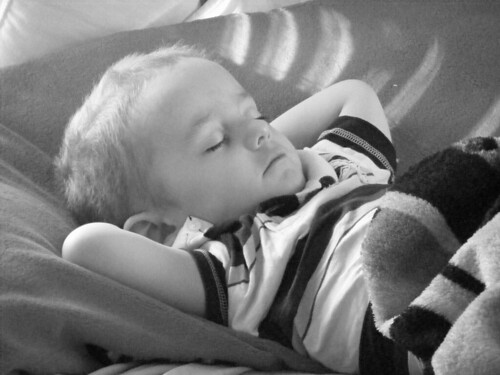
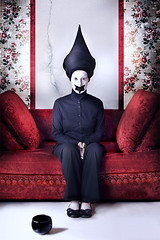
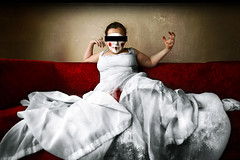


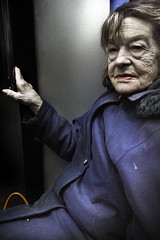
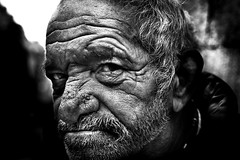
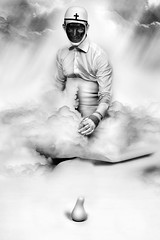

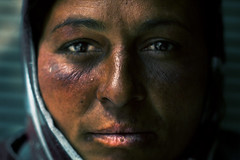
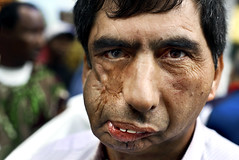
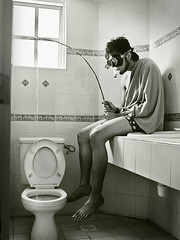
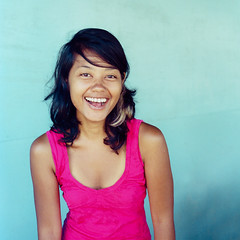



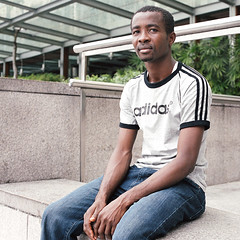
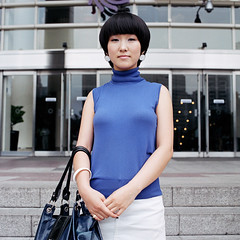


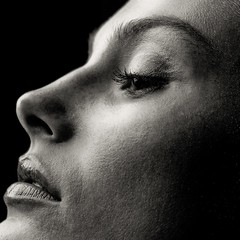
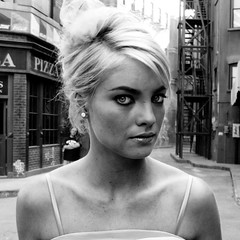
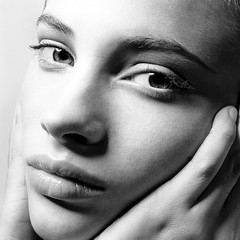

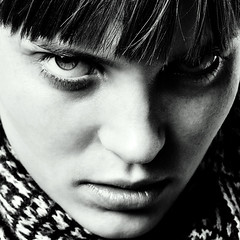
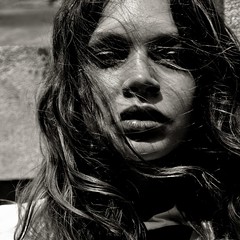
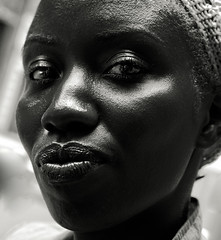
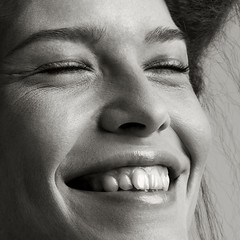
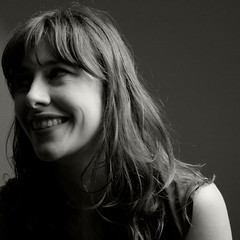

![by [brett walker]](http://farm3.static.flickr.com/2363/2323729277_ce9cc24c3a_m.jpg)
![by [brett walker]](http://farm3.static.flickr.com/2410/1791627612_96e2d24063_m.jpg)
![by [brett walker]](http://farm1.static.flickr.com/160/438910552_cd1510cf0f_m.jpg)
![by [brett walker]](http://farm2.static.flickr.com/1146/1031803652_b6886b56fc_m.jpg)
![by [brett walker]](http://farm2.static.flickr.com/1098/1013516042_7fd667d0fc_m.jpg)
![by [brett walker]](http://farm4.static.flickr.com/3181/2601246302_d01b52295d_m.jpg)
![by [brett walker]](http://farm1.static.flickr.com/160/427077836_6306ceb201_m.jpg)
![by [brett walker]](http://farm3.static.flickr.com/2218/2212642874_33294d45cf_m.jpg)
![by [brett walker]](http://farm3.static.flickr.com/2249/2016257647_5f11bb4660_m.jpg)
![by [brett walker]](http://farm1.static.flickr.com/208/478714085_7e048a9157_m.jpg)







